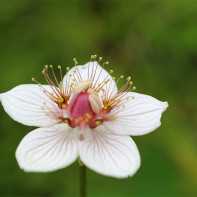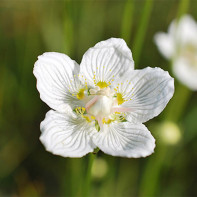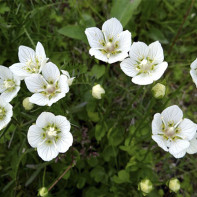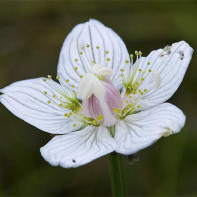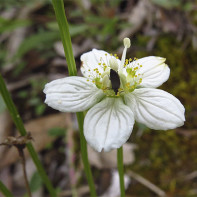Thistle marsh: medicinal properties and contraindications
The marsh belozor is an herbaceous perennial of the birchwood family. This beautiful plant is used in folk medicine as a medicinal raw material. The flower also has another name - Illya grass. Belozor begins to bloom in late July or early August, when Ilyin day is celebrated according to the Orthodox calendar. The plant is used in landscape compositions, it combines well with grasses and shrubs that like damp ground. Belozor marsh looks good on the shore of artificial ponds.
- Chemical composition
- How it looks and where it grows
- Gathering and storage
- Therapeutic properties of belozor marsh
- Belosor marsh in folk medicine
- Tincture for tachycardia, arrhythmia and neurosis
- Decoction of the seeds for treating urolithiasis
- Infusion for lowering blood pressure
- Fresh leaf compress
- Diuretic collection in a thermos
- Infusion for stomach cancer
- Decoction for liver diseases
- Tincture for migraine, tachycardia and bleeding
- Kidney infusion for edema
- Flower infusion for whitewash and gonorrhea
- Complex infusion for the treatment of vegetovascular dystonia
- Types of healing compositions
- Infusion
- Tincture
- Decoction
- Contraindications to use
Chemical Composition
The chemical composition of the plant is poorly studied. The swamp squirrel contains alkaloids, which are among the strongest poisons. However, in small doses, these toxins have a therapeutic effect on the nervous and circulatory system. The average content of substances of the alkaloid group is 0.03%.
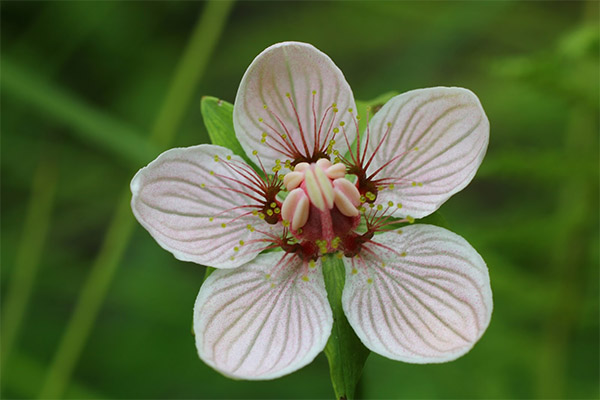
The marsh whitegrass also contains complex organic compounds:
- flavonoids;
- quercetin;
- rutin;
- kaempferol;
- hyperin;
- hyperoside;
- saponins;
- luteolyl.
The ground part and roots contain ascorbic acid (0.75%), coumarin (0.12%), tannins and bitter substances of pyrocatechin group (3.6-7.2%), resinous compounds (3.38%). The flowers of the plant contain a lot of leucoanthocyanin, and the mature seeds contain fatty oils.
What it looks like and where it grows
Belozor marsh looks graceful and exquisite. The flowers, which grow on long, bare flower stalks, are beautiful and unusual. Between the white striped petals and greenish yellow stamens are several staminodes. On them "sit" rounded pins with thin, long stems and spherical heads that look like honeydrops. They attract insect pollinators.
Belosor grows to a height of up to 40 cm. If the soil is not wet enough, the flower will be stunted. The root system of the plant is weak and unbranched. The flower has a single rhizome, from which long, thin lobed roots depart.
Heart-shaped bright green leaves with long petioles grow from a root rosette. In mid-summer, a few leaves also appear on flower stalks.
In late September, the fruit-bolls mature. When the 4-branched pod opens, numerous oval seeds fall to the ground. They are very small, the average length of a seed is 0.5 mm. One gram of planting material contains up to 1500 seeds. The light seeds are carried by wind and water, and fly apart when the stems are swayed.
The range of the marsh whitegrass is very large. The plant is widely distributed in the temperate zone of Eurasia and the North American continent.
The flower grows on forested plains, flood meadows and damp glades, in swampy lowlands and on peatlands, and is found on the banks of rivers, reservoirs and lakes. In the United States this flower is considered a threatened species. In several regions of Russia the plant is included in the Red Book.
Gathering and storage
The ground part of the marsh whitegrass is harvested at the height of flowering, in July and August. Stems and leaves are cut with a knife or scissors or simply plucked. If you take the rhizome, the plant is undermined or just pulled out of soft soil. The roots are better to harvest in the fall, in September.
It is not worth the risk of working with your bare hands. At all stages of harvesting raw materials, the skin should be protected with rubber gloves.
Immediately after harvesting, whitesaurus is washed in running water and a place is prepared for drying the herb. Bundle herbs together with flowers and hang the "wreaths" in a shed, on a veranda or under a shed, in any ventilated room that is not exposed to sunlight. You can dry the plants on a rack or on sieves, separating the flowers and roots from the stems and leaves.
The seeds are harvested only after they are ripe. Here it is important not to miss the moment and not to lose the harvest. If the plant is cultivated on the plot, you can put a white cloth or polyethylene film around it. The capsules are cut and dried on a flat, smooth surface, without access to direct sunlight.
Store dried whitegrass in a cardboard box, gauze or cloth bags, in a dry, ventilated room. Stocks of other dried herbs and food items should not be near this toxic plant. It is recommended to make a clearly readable inscription on the surface of the container: "Poisonous!"
The medicinal properties of belozor marsh
The plant is not used in official medicine. However, selective studies have shown that the herb belozor has the following effects on the human body:
- diuretic;
- styptic;
- choleretic
- wound-healing;
- astringent;
- sedative.
Experiments carried out on animals confirmed the choleretic effect of taking the extract of Belozer marsh. The laboratory preparation slowed the heart rate, increased uterine tone, increased motility of bowel walls and had a laxative effect. Alcohol solution of the plant had a bactericidal effect on Staphylococcus aureus. Toxic properties of ilinskaya grass were not noted by the researchers. At present, the pharmaceutical industry does not produce preparations containing extracts or extracts from the marsh marsh belozor.
Marsh whitewash in folk medicine
The plant has been used for centuries in traditional medicine of different peoples around the world. According to the records of explorers, travelers, and physicians, in 19th-century European Russia, Illya herb was brewed for children and adults. Decoctions and infusions were used to treat difficult urination, abdominal pain, subcostal pressure, and diarrhea. The same remedies were prescribed to drink to stop hemoptysis and internal bleeding, to cleanse the liver. Belozor seeds were brewed to stop vomiting, and a "poke" of leaves was used to treat eye infections.
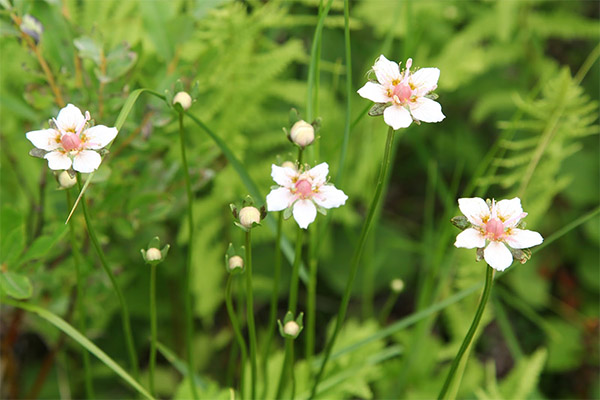
Folk healers of Eastern Siberia used belozor to treat colds and childhood illnesses. Peoples of the Far East territories believed that the ilin herb would stop pulmonary and uterine bleeding, and cure panic disorder - epilepsy. Komi folk healers brewed Belozor for women who had just given birth to quickly deflate the placenta. The same remedies were prescribed for kidney pains, insomnia, bloating of the stomach, they relieved the symptoms of high blood pressure.
Healers of the Altai peoples used Belozor for diarrhea, inflammation of the bladder and urethra. In rheumatism, they made compresses from the leaves and thick decoctions, gave infusions to children to strengthen the intestines to prevent rectal prolapse during constipation. Plant teas were also used in the treatment of colds.
In the Urals, Illya herb was brewed for women to strengthen the body after childbirth, in the Caucasus Belozor was used to treat vaginal infections accompanied by perspiration. In Latvia, this medicinal plant was used to treat stomach pains, and fresh leaves were applied to wounds.
In Tibetan medicine it is used to distil bile, reduce fever, strengthen blood vessels and heart. Ukrainian and Belarusian healers recommend taking infusions and decoctions of St. John's wort to prevent and treat hysterical seizures, tachycardia, and as an anticonvulsant. In Germany, all parts of the plant were used to treat stomach cancer.
Until the first half of the 20th century, until effective medicines became available, marsh whitetail was used in veterinary medicine to treat cattle. The decoction was used to wash animal wounds to prevent flies from laying larvae in them.
Modern folk medicine has not abandoned the belozer marsh. Folk remedies are effective for the treatment of:
- heart neurosis;
- tachycardia and all types of arrhythmias;
- epileptic seizures;
- headaches;
- insomnia;
- tuberculosis;
- pneumonia;
- bronchitis;
- rheumatism;
- cholelithiasis;
- spine and joint pains;
- cystitis;
- urethritis;
- urolithiasis;
- pneumonia;
- bronchitis;
- acute respiratory diseases;
- liver diseases;
- inflammatory diseases of the kidneys;
- colitis;
- nervousness and hysteria.
Folk healers use belozor as an external remedy as well. The greens of the plant are used in the treatment of blepharitis and conjunctivitis. Grinded seeds and fresh leaf help quickly heal scratches and small wounds.
The marsh can be used as the only medicinal component of the remedy. It is also introduced into the composition of complex gatherings, where medicinal plants act in complex and complement each other's beneficial properties.
Tincture for the treatment of tachycardia, arrhythmia and neurosis
The tincture consists of 2 components - raw material belozor and vodka. The remedy is prepared from dried leaves. You can take the root and dried herbs in equal quantities.
Vodka is poured into a clean glass bottle. Add herbal raw materials and close the container airtight lid. Insist 2 weeks in a dark place at room temperature. Shake the bottle every day. After 14 days, the liquid is filtered through a cloth or paper filter and poured back into the bottle. The leaves are squeezed into a solution to increase the concentration of useful substances.
The tincture is taken as needed, but no more than 3-4 times a day, at regular intervals. Pour cool boiled water into a glass and add 30 drops of the remedy.
Decoction of the seeds for the treatment of urolithiasis
To prepare the remedy, you will need the seeds of bogospora marsh (10 g) and a glass of boiling water. Atmosphere or kitchen scales measure a desired amount of seed, pour it into an enamel mug and pour just boiling water.
The vessel is closed with a lid and kept in a boiling water bath for half an hour. Then remove the mug and infused drink for at least 10 minutes (under the lid). The liquid is strained through a cloth, squeeze the swollen seeds and pour boiling water into the vessel, increasing the volume of broth to 250 ml. The remedy is drunk three times a day, after a meal, a tablespoon. Treatment continues for at least a week.
Decoction prepared according to this recipe can be used to treat nervous diseases, pathologies of the cardiovascular system, bronchitis, sore throat and colds.
Infusion to lower blood pressure
A tablespoon of dry grass belozor pour a glass of boiling water and insist 1.5-2 hours. Boiled grass is squeezed into a solution and strain the liquid through a cloth napkin. Take the remedy three times a day, half a shot, after a meal. The infusion relaxes and calms well, helps to reduce high blood pressure.
Fresh leaf compress
This remedy has anti-inflammatory and antimicrobial action. A compress (lotion) is made from freshly picked leaves of the Ilia grass. The herbs are ground in a cast-iron mortar so that they become soft and secrete juice.
A patient closes his eyes and puts a layer of crushed Belozor on them, cover the lotion with a cloth napkin. The compress is kept for 15-20 minutes.
In the same way you can reduce inflammation of the eyelids with blepharitis. The lotion can be used not only for the eyes. Grinded herbs and whole leaves are applied to scratches, rashes and small wounds.
A diuretic collection in a thermos.
This complex composition includes dry raw materials of 6 healing plants with similar properties. To prepare the remedy, you will need:
- The herb of marsh whitegrass, kidney tea (orthosiphon stamen), the leaves of bear ears, the herb half-pal - 1 teaspoon each.
- Grass knotweed and Kuril tea - 2 teaspoons.
The herbs are measured and poured into a cup, thoroughly mix the raw material and transfer it to a paper bag. To prepare a portion of herbal tea take 2 tablespoons of the mixture and pour it into a thermos of 0.35-0.5 liters. Pour a glass of boiling water over the mix (250 ml), close the lid of the thermos and infuse the tea for 30-35 minutes. Then pour the remedy into a glass jar and close it. Diuretic tea is taken three times a day, 80 ml (one-third cup), before meals.
Infusion for stomach cancer treatment
Folk healers prepare an infusion of Belozer as an additional remedy for the treatment of stomach cancer. The herbal composition in no way replaces the main therapy, but only accompanies it, easing the condition of the patient.
To prepare the remedy, take 40 grams of dried roots and leaves of Illya grass. The ingredients are mixed in a ratio of 1:1. Raw materials are placed in a half-liter glass jar and pour boiling water (up to the neck). Close the vessel tight plastic lid. After the bank has cooled to room temperature, the infusion is placed in the refrigerator for 2 weeks.
The remedy is taken 3-4 times a day, 20-25 ml on an empty stomach. If treatment is well tolerated, the single dose can be increased to 40 ml. Means can be taken continuously or courses. You should consult with your doctor about the duration of treatment.
The infusion prepared according to this recipe reduces blood pressure, acts as a sedative and anti-inflammatory. It can be used for wet compresses and applied to the skin to reduce inflammation.
Decoction for the treatment of liver disease
Belozor marsh promotes the renewal of liver cells, the decoction has a healing effect on the gastrointestinal tract. To prepare the product need 1.5 tablespoons of marsh marsh marsh (dry material) and 250 ml of boiled water. The decoction is prepared without the use of a water bath.
In a large enamel mug poured herbal raw materials and pour hot water. The vessel is placed on the stove, heat the liquid and boil the product for at least 5 minutes. Then remove the mug from the stove, cover with a tight lid and insist 2-3 hours.
When the solution cools, the liquid is strained, the boiled herb is squeezed, the decoction is poured into a glass jar, close the vessel tightly and put it in the refrigerator. The remedy is taken daily, a tablespoon, regardless of the time of day and meals.
Tincture for migraine, tachycardia and bleeding
This remedy can be prepared from the dried greens of belozor marsh. Take:
- 40-45 g of raw materials;
- A bottle of vodka.
Grass raw material is placed in the vodka and close the bottle tight lid. The potion is insisted in the house, dark place, at least 14-15 days. Tincture shaken daily to ensure that the useful substances are actively released into the liquid. After the remedy is infused, the liquid is strained through a gauze filter. Tincture is taken once a day. Pour water into a glass, using a pipette measure 20-30 drops of the remedy. The treatment continues until the condition improves.
Kidney collection from edema
To prepare an infusion, which has anti-inflammatory and diuretic effect, you need to buy dry apothecary raw materials of several plants. The collection includes:
- marsh whitegrass;
- anemone;
- hernia smooth;
- rabid cucumber;
- sheep's wort
- linseed;
- soapflower medicinal;
- white bryonia;
- hemp sown;
- balsam flower; balsamine (common sweetheart);
- cravat (cyclamen);
- Eucommia vyazolistnaya.
Before making an infusion make a mixture of medicinal plants. In a cup put 1 teaspoon of each type of raw material and mix the ingredients of the mixture.
To prepare a portion of the remedy, take a tablespoon of herbs and put in a glass or ceramic container. Pour boiling water over the raw material, close the lid and insist 2.5-3 hours. Steamed plants are squeezed, cool the drug solution and store it in the refrigerator for 2-3 days. The remedy is taken 3 times a day, before breakfast, lunch and dinner. The volume of a single serving - 20-30 ml.
Infusion of flowers for the treatment of squirrels and gonorrhea
To prepare a decoction, dried flowers of belozor marsh. The remedy is used internally, about the douches should be consulted with a gynecologist. Diseases accompanied by itching and unpleasant discharge are caused by fungi and bacteria, and belozor is able to destroy pathogenic microflora and reduce inflammation. Folk healers cite at least two recipes for treating gonorrhea and whiteheads.
- A tablespoon of dried flowers are placed in an enamel pan and pour a glass of hot water (200-250 ml). The container is placed in a boiling water bath and incubated there for 10 minutes. Then remove the pan, the liquid is strained through a cloth and add boiling water to replace the boiled liquid. Means take 4 times a day, a tablespoon after a meal.
- Dry flowers are placed in a half-liter jar and pour 400-450 ml of boiling water. The liquid insist 1 hour. The vessel must be closed with a lid. After a given time, the infusion is strained. The remedy is drunk up to 6 times a day, 1 teaspoon, with a meal or after a meal.
Complex infusion for the treatment of vegetovascular dystonia
The collection includes 12 medicinal plants that normalize the heart, reduce blood pressure, have a calming and relaxing effect. You can make the collection yourself by buying all the necessary ingredients in the pharmacy. To prepare the remedy, you will need:
- Grass beloeser marsh, oregano, bellflower, woolly panceria, tricolor violet, celandine, chamomile, goose-foot lapwort (2 parts each).
- Dill seeds (2 parts).
- Rose hips (4 parts).
- Stems of hops (2 parts).
- Root of patrinia rock (Siberian) (1 part).
Measure the required amount of each type of dry plant raw materials, mix the components in a large bowl, pour them into a paper bag or cardboard box. To prepare an infusion take 2 tablespoons of the mixture and place it in a thermos. Pour half a liter of just boiling water and screw the lid.
Insist 7-8 hours, after which the thermos is opened, pour the liquid into a jar (while straining boiled plant material). To treat vascular dystonia infusion is taken three times a day, half a cup, 25-30 minutes before a meal. The remedy can be drunk courses of 1.5-2 months, with breaks of up to 2-3 weeks.
Types of medicinal compositions.
When preparing potions, it is necessary to adhere to the traditional formulation, so as not to overdose not only useful but also harmful substances contained in the plants. Infusions, decoctions and tinctures differ from each other in the way they are prepared.
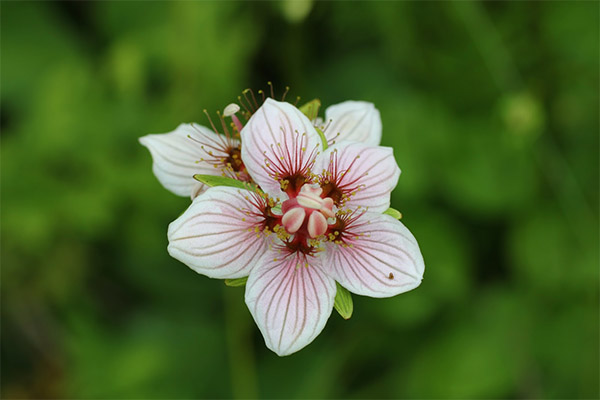
Infusion
For infusions, the leaves, stems, roots and flowers of belozor marsh are used. Classic recipes take 1-2 tablespoons of dry raw materials and pour it just boiling water. The container is placed in a boiling water bath and incubated for 3-10 minutes.
In recipes of folk healers thermal treatment in a water bath is often excluded, being limited to insisting liquid under a lid. Such preparations are recommended to prepare in thick-walled containers that are good at keeping heat. This can be glass and ceramic. The container is closed with a lid and insist the potion for 1.5-2 hours. When the liquid becomes warm, strain the infusion and squeeze the vegetable cake.
Tincture .
Tinctures are prepared on alcohol or vodka, and the dosage of the remedy is measured in drops. Medical alcohol has a strength of 70 degrees. It can be diluted with boiled water and reduce the concentration of ethyl alcohol to 40 revolving percent.
To prepare 500 ml of tincture take 3-4 spoons of dry raw materials (root, leaves and stems) and half a liter of alcohol base. The vessel is sealed hermetically and put in a kitchen cabinet with closed doors or in another dark place (but not in the refrigerator). After 2-3 weeks, the tincture will be ready for use as directed. The remedy is stored in the refrigerator up to six months or more.
Decoction .
Decoction is prepared the same way as the infusion, but the heat treatment time increases. To prepare the remedy will need 1-2 spoons of dried roots or leaves of Belosor marsh. Sometimes the flowers are also used.
In classic recipes, the raw material is poured into an enamel metal bowl, pour hot water over the plants and put the vessel in a water bath. Decoction is heated for 10 to 30 minutes. After that, the dish is taken out, the plant base is squeezed into the liquid, strained and the decoction is cooled.
Because of the rather long heat treatment, the decoction has a higher concentration of useful substances than the infusion. In recipes from folk healers, the water bath is often replaced by simple boiling on the stove.
Contraindications to use
Belozor marsh must not be used by people suffering from thrombophilia. The plant is contraindicated in low blood pressure and bradycardia. The marsh whitegrass is poisonous, the substances in its composition can cause poisoning. Therefore, before preparing home remedies for treatment, it is worth consulting an experienced herbalist healer or doctor.
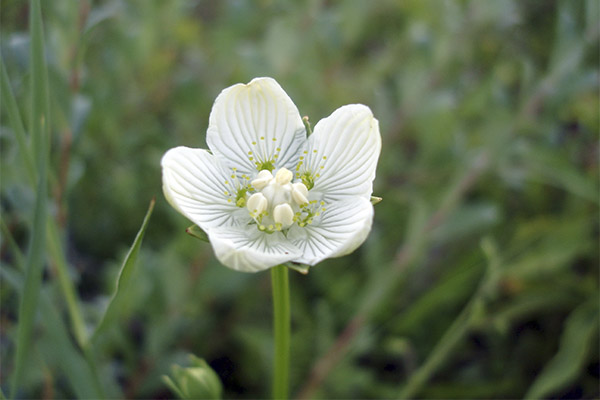
Means prepared from belozor can not be used to treat children and pregnant women, because full studies of the effect of the plant on the human body have not yet been conducted. For the same reason, belozor marsh is contraindicated for nursing women.
Means on the basis of ilinskaya grass can not be taken by people who have manifested any allergic reaction to herbal preparations of homemade. In this case, you will have to refuse treatment with folk remedies.
In the wild, there are 55 species of belozor marsh. Plants differ in size, appearance and structure of flowers, leaves and root system. All representatives of the family contain alkaloids and are considered poisonous plants. Children should not be allowed to pick flowers of Belozor, play with them, collect them in bouquets, let alone taste them. In case of poisoning, it is necessary to flush the stomach with plenty of warm water and call an ambulance.
«Important: All information on this site is provided for informational purposes only for informational purposes only. Before applying any recommendations, consult with a health care professional. health care professionals. Neither the editors nor the authors shall be liable for any possible harm caused by materials."

